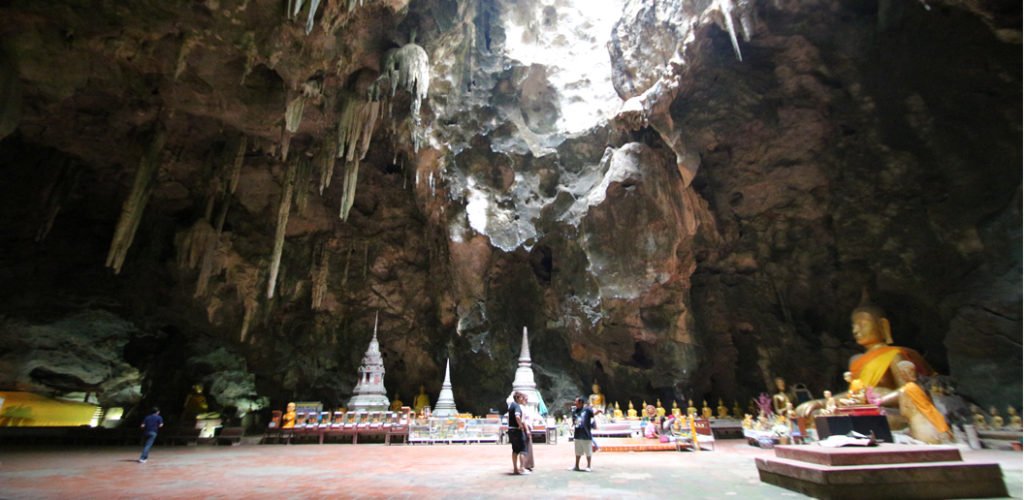Diamonds are marvelous things. They’ve been called a woman’s best friend. They’ve been sought after and coveted as objects of the most priceless value. They symbolize wealth, status, beauty and longevity. As Shirley Bassey sang it, diamonds really are forever. This month’s hot getaway is beautiful, priceless, symbolic in all its essence and valued for its status just like this precious mineral. If you’re curious about how to connect a province to this beautiful prize, do read on.
Phetchaburi breaks down in two two words: “Phet” meaning “Diamond” in Thai language and “Buri” meaning “city” in Sanskrit. The attribution to this is because of the river Phet, which passes right by the capital of the province, which goes by the same name and gave its designation to the latter. The River Phet, which sees its source at the Kaeng Krachan National Park, is an icon of this province and leads to the Gulf of Thailand, where it disembogues at Baan Leam. But before going into further detail, it would be fitting to describe the history of this province.
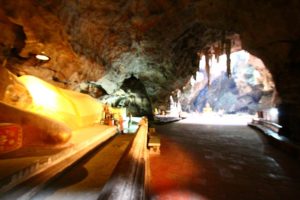 Phetchaburi began its date with history during the eleventh century, a period during which the region was ruled by the Khmers and saw the arrival of its first settlers. These settlements however, were at best ephemeral or passing points until it was transformed into a key logistical port linking Ayutthaya to the Andaman Sea. The Burmese were aware of the area’s strategic value and were quick to launch several invasion attempts, which were all repelled by the Thais. The area thus became a cultural symbol, with plenty of valuable ornamentation telling the story of its rich past. It gained additional prestige upon the strategic relocation of Siam’s capital from Ayutthaya to Bangkok, as it attracted the interest of King Rama IV, who made it his retreat destination for years to come. The hilltop palace that he frequented, which was completed at the summit of Phra Nakhon Khiri (known more commonly as Khao Wang, meaning “Hill with a Palace”) in 1860, is today part of the Thai National Museum and the surroundings were officially named to be a historical park in 1979.
Phetchaburi began its date with history during the eleventh century, a period during which the region was ruled by the Khmers and saw the arrival of its first settlers. These settlements however, were at best ephemeral or passing points until it was transformed into a key logistical port linking Ayutthaya to the Andaman Sea. The Burmese were aware of the area’s strategic value and were quick to launch several invasion attempts, which were all repelled by the Thais. The area thus became a cultural symbol, with plenty of valuable ornamentation telling the story of its rich past. It gained additional prestige upon the strategic relocation of Siam’s capital from Ayutthaya to Bangkok, as it attracted the interest of King Rama IV, who made it his retreat destination for years to come. The hilltop palace that he frequented, which was completed at the summit of Phra Nakhon Khiri (known more commonly as Khao Wang, meaning “Hill with a Palace”) in 1860, is today part of the Thai National Museum and the surroundings were officially named to be a historical park in 1979.
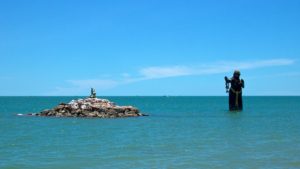
Phetchaburi is situated in the southern stretch of Thailand, bordering the province of Ratchaburi in the north, the province of Samut Songkhram in the north east, the Gulf of Thailand in the east, the province of Prachuap Khiri Khan in the south and the Burmese region of Tanintharyi. With eight administrative divisions, the most popular three are Mueang Phetchaburi, Cha Am and Kaeng Krachan. The first is, as mentioned earlier, the capital of the province. It is famous for the river that gives it the name and by the originality of the desserts that are famously confectioned there, a type of custard made with Mung Beans, coconut milk and duck eggs that goes by the name of Khanom Mor Gaeng. An absolute delicacy and now available throughout the country, nobody forgets that its origins lie at the heart of this city. Cha Am is another favourite attraction in the province. A beautiful and marvellous little beach town, Cha Am is frequented by a large quantity of tourists throughout the year due to its easy accessibility from Bangkok through Phektasem Road and the quality along with the relative quietness of its sandy beach. High end resorts include the Sofitel, the Regent, Springfield and the Sheraton, all of which attract many tourists and locals alike, especially during the high season.
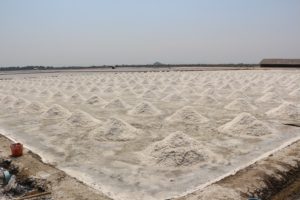 Cha Am is also a mere twenty minute car ride from the city of Hua Hin, which has a great array of hotels in which to stay. It is due to the proximity of Hua Hin too, that the Cha Am beaches are often undeservingly overlooked, but which at the same time delimits their greater quietness and tranquillity, a trait that the stretches of sand in Hua Hin often lack. The other district, which we briefly touched on earlier, is Kaeng Krachan. Kaeng Krachan’s status as a district is actually relatively young, gaining such denomination solely in 1988, and being granted the rights of a full district in 1993. The main attraction of this area, which is arguably also one of the main attractions of the province, is the Kaeng Krachan National Park.
Cha Am is also a mere twenty minute car ride from the city of Hua Hin, which has a great array of hotels in which to stay. It is due to the proximity of Hua Hin too, that the Cha Am beaches are often undeservingly overlooked, but which at the same time delimits their greater quietness and tranquillity, a trait that the stretches of sand in Hua Hin often lack. The other district, which we briefly touched on earlier, is Kaeng Krachan. Kaeng Krachan’s status as a district is actually relatively young, gaining such denomination solely in 1988, and being granted the rights of a full district in 1993. The main attraction of this area, which is arguably also one of the main attractions of the province, is the Kaeng Krachan National Park.
The Kaeng Krachan National Park is a stunning artefact of nature. Combining all the beautiful scenery with the accessibility and conservation requirements throughout its 2,900 square kilometres, it is a place entirely worth spending a day or two exploring in its entirety. It is first of all, the source to two main rivers, the first as we mentioned gives its name to the province, and the second is the Pranburi River. The Phetchaburi is sectioned by a dam built in 1966, which creates a lake covering a stunning forty six square kilometres. Created in 1981, it was at the time the twenty eighth national park in Thailand and it was further enlarged in 1984 to include the boundary between the province of Prachuap Khiri Khan and that of Phetchaburi. The national park, which has been included in the list of ASEAN Heritage Parks was equally proposed to UNESCO as a potential future world heritage site. The park possesses a large amalgamate of incredibly rich flora and fauna, including fifty seven types of mammals, four hundred species of birds and both tropical and sub-tropical plants and flowers.
If you are someone that enjoys temples and caves, Phetchaburi will definitely please you in that sense. Apart from the ancient Khao Wang royal palace, the Khao Loung Caves are marvellous in their own right: one of the country’s most remarkable cave shrines, it is accessed through a set of inclined stairs. While one descends, it is impossible not to be set in awe by the large collective of stalactites that majestically cling onto the top of the cave. The centre is captivated by the figure of a Buddha, upon which shines an almost magical glow of light through the open aired façade whenever the sun shines down on it, as this refracts and illuminates the rest of the cave. The second cave possesses an imperious tree of three hundred years of age, which can be seen rising above, contorting and twisting its roots as it glistens from the rays of light that shine through its thick foliage.
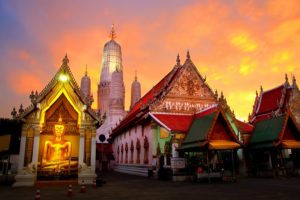 Arriving to Phetchaburi is very easy, as it can be accessed through a short two hour car trip from Bangkok. If you enjoy the comfort of your own private car, trips can cost you from two thousand baht upwards if negotiated appropriately. Should you choose to be more adventurous however, vans from a multitude of companies leave Victory Monument towards the province every half an hour throughout the week, making it is very convenient and flexible. Prices are a hundred and sixty baht, significantly less than the car or the taxi. The train however is also an option, costing as little as 34 baht – this of course has the inconvenience of being slower than the other methods of transport.
Arriving to Phetchaburi is very easy, as it can be accessed through a short two hour car trip from Bangkok. If you enjoy the comfort of your own private car, trips can cost you from two thousand baht upwards if negotiated appropriately. Should you choose to be more adventurous however, vans from a multitude of companies leave Victory Monument towards the province every half an hour throughout the week, making it is very convenient and flexible. Prices are a hundred and sixty baht, significantly less than the car or the taxi. The train however is also an option, costing as little as 34 baht – this of course has the inconvenience of being slower than the other methods of transport.
At large, Phetchaburi is one of the most fascinating provinces in Thailand. Whether the objective is to explore the deep historical richness of the area or to discover the marvellous flora and fauna of Kaeng Krachan, the place will be short of neither. And of course, how could we forget the attractiveness of Cha Am’s fantastically quiet beaches? If you have yet to visit Phetchaburi due to any reason, you can be assured that it will be worth your time.


